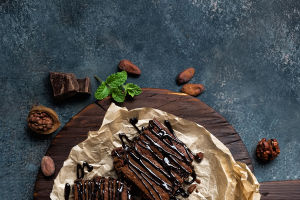The croissant, which looks like a horn, is a delicious sweet that is loved by people all over the world.
The main ingredients of croissant bread are high-gluten flour, low-gluten flour, etc., and the accessories are dry yeast, sugar, eggs, vegetable butter, milk, etc. The taste is sweet, with chocolate, jam, cream, raisins and other flavors.
Different people like croissants with different flavors, from rich milky to refreshing and not greasy, from solid and moist to light and crisp, some focus on highlighting the flavor of wheat, some prefer butter, and some are obsessed with mining the fermented flavor - the pursuit The taste and flavor are different, the choice of materials and preparation methods will be different, and the texture and state of croissants will be varied. To judge whether a croissant is orthodox, we can choose from the following aspects.
The first is shape, the most common shapes of croissants are straight and crescent, which is a conventional sign used to distinguish the type of fat used: straight croissants use butter, crescents use wheat cream. The ideal melting point of shortening should be 3-5°C higher than the fermentation temperature, so as to avoid oil leakage due to melting of the fat during fermentation. Croissant's shape can be said to be extremely symmetrical. Croissant's symmetrical shape and aesthetics are very intuitive indicators of the quality of Croissant's appearance. If the left and right asymmetric shapes are not uniform, it is likely that the thickness of the dough is even when the dough is crisped, or the two sides are not tight when rolling, and of course, it may be tilted or collided when fermenting.
The second is the level. The beauty of the croissant also comes from the even and distinct layers. If the layers are not distinct, it is very likely that the temperature of the dough and the oil are different, and the soft and hard states are different when the crispy is opened. If the dough overflows, it will be difficult to have a uniform and clear layer.
The last one is color and gloss. Similar to the baguette, the progressive layers of toasted color and luster are the coveted charm of a croissant. If the epidermis has no luster, it looks thick and has no sense of lightness, and it is difficult to arouse people's appetite. Croissants baked in an open-hearth oven often have a lighter color due to uneven heating. In addition, the croissants that are too tightly rolled on the shaping will not be able to show the contrast of shades and layers of colors after baking.


